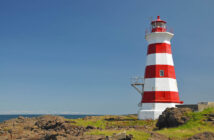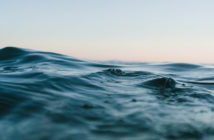The Pickering Auxiliary Rescue Association (PARA) is a registered charity dedicated to the preservation of life on the water. Currently, 56 unpaid volunteers operate a marine rescue service to protect mariners and assist police, fire, and ambulance services in emergency situations. PARA is also active in encouraging public awareness of water safety.
PARA carries on a tradition of volunteers assisting area boaters that began in 1967. PARA members will be celebrating a 50th anniversary of volunteer service to boaters in Lake Ontario east of Toronto
PARA volunteers, on call 24 hours a day, respond to any emergency situation, under the direction of the Joint Rescue Coordination Centre in Trenton. Canadian Coast Guard Auxiliary units like PARA can often respond to emergency situations faster than the regular Coast Guard or regional police. This is due to their closer proximity.
PARA’s Search and Rescue activities have included night searches in response to emergency flares, searches for overdue vessels, assistance to vessels in distress and to persons in the water.
The rescue vessel PARU, based at the Frenchman’s Bay Yacht Club, is 34 feet long and its aluminum hull is powered by twin Volvo diesel D4 engines and duo-prop outdrives after being repowered in 2015. PARU is now capable of a top speed of 40 knots.
Regular patrols and on-water training are carried out on PARU on Wednesday, Thursday and Friday evenings, as well as during the daytime on Saturdays, Sundays and holidays.
During a regular boating season from May to October, PARA volunteers provide approximately 2,100 hours of service to the boating community aboard the rescue vessel PARU, and about 3,500 volunteer hours in all activities year-round. PARA is currently supported by grants from the Region of Durham, and by corporate and individual charitable donations.
PARA is one of the oldest volunteer marine rescue units on Lake Ontario, continuing a 50-year tradition of service.
Since this service began, 745 volunteers have assisted more than 3,100 people, of which at least 270 were in life-threatening situations.
The first vessel operated by the volunteers of the Pickering Emergency Rescue Unit was a 27-foot Chris Craft, appropriately named “PERU.”
It was then replaced in 1975 with a 32-foot FibreForm with a fly bridge. The volunteers of PERU changed their name to the Pickering Ajax Rescue Unit, in recognition of the two municipalities providing most of the support and funding. The new vessel was thus named “PARU.”
Eventually, the fibreglass hull of the first PARU started to show signs of age. It was decommissioned in 1993, after 18 years of service. While a search for a replacement vessel with enhanced capabilities got underway, the Pickering Ajax Rescue Association borrowed a rigid hull inflatable boat from the Canadian Coast Guard.
A suitable vessel was found in a workboat, originally built in 1992 to be 30 feet overall, by Henley Manufacturing, then based in Picton, Ontario. The vessel was lengthened by its original owner and then saw service as a dive boat. It was then purchased by PARA in 1995. The widely-recognized name of “PARU” was given to it, and it has held up well over the subsequent 22 years.
Originally powered by twin Volvo Penta KAD-42 engines developing 440 horsepower in total, PARU could achieve a top speed of 32 knots when it entered service for search and rescue. Following the repowering of PARU in 2015 with twin Volvo D4 engines, about 520 horsepower and up to 40 knots is achievable. This is accomplished with a reduction in total weight and increased overall fuel efficiency.
The organization has developed into an integral unit of the Search and Rescue work co-ordinated by the Canadian Coast Guard Search and Rescue Centre in Trenton. The purpose of Coast Guard Auxiliaries and the “regular” Coast Guard are much the same. The Coast Guard relies on auxiliaries to supplement rescue operations. In most cases, auxiliary units such as P.A.R.U. can respond more quickly in Search and Rescues since the various units are all based in close proximity to pleasure boating activity centres.
PARU has crew members who live in the area surrounding Frenchman’s Bay Yacht Club where the vessel is moored. Helicopter response time from CFB Trenton can average 90 minutes by day and two hours by night. PARU’s 24-hour emergency response time averages 20 minutes in good weather to the outermost of our boundaries (Five minute call-in, 15 minute prep. and travel). PARU history is one of long-time dedication to the people of Pickering.
1966: Pickering township police are overwhelmed by their mandate to provide a maritime search and rescue service for Lake Ontario south of Pickering. Pickering council is informed the police can no longer provide the service.
1967: Working in co-operation with Pickering township police, an organization called the Pickering Emergency Rescue Unit (PERU) was formed in April. The township of Pickering purchased a used 25-foot Chris Craft for PERU’s use in fulfilling its new mandate..
1974: The inception of regional government led to changes in administration of police services. All town police services came under the new Region of Durham, which included Pickering and Ajax. In that year, Ajax joined Pickering in sharing the cost of rescue equipment and maintenance of the vessel.
1975: PERU was showing her age and limitations, so Pickering and Ajax jointly purchased a new rescue cutter, a 28-foot fibreglass deep “v” hull, manufactured by Fibreform.
1979: PARU joined with the only other volunteer Rescue Auxiliaries along Lake Ontario, Oshawa, which was Marine Rescue Auxiliary (COMRA), and Oakville Water Auxiliary Rescue Force (TOWARF) in the newly formed Canadian Marine Rescue Auxiliary.
1987: Ajax council voted to drop funding support of PARU, leaving the Pickering as the sole financier again.
1995: After serving Pickering for 19 years, the Fibreform cruiser was retired from service.
1996: After considering several alternatives, PARU acquired a used 29-foot aluminum hull vessel originally manufactured in Picton. The vessel was lengthened, strengthened and had twin diesel inboard/outboard engines, as well as enlarged fuel tanks.
2003: Following a challenging recovery of a person in the water in which PARU was badly damaged, her aluminum hull was repaired and reinforced, her engines rebuilt, and her pilothouse was redesigned, giving PARU the capability to fulfill her mission for many years to come.








